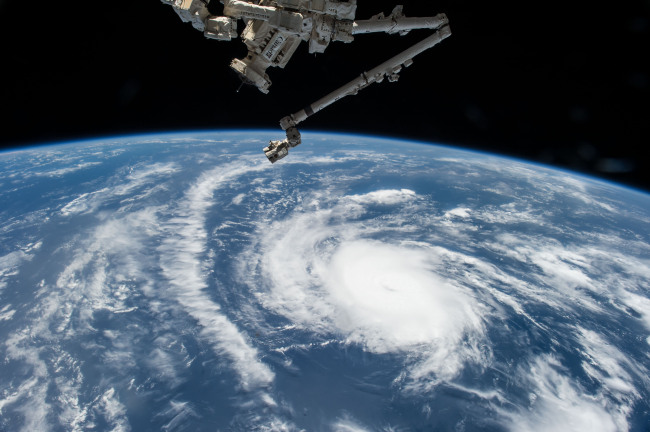Korea and the U.S. have reached an agreement for a bilateral cooperation on their space programs, the Seoul government said Monday.
The Ministry of Science, ICT and Future Planning said the agreement carries the legal and institutional basis for the two countries cooperating on the use of space technology. This ranges from the exploration of outer space to the observation of earth and general scientific research.
 |
| This Aug. 20, 2015 photo made available by NASA shows Hurricane Danny as the International Space Station orbits over the central Atlantic Ocean. (NASA) |
The ministry said that the two countries have agreed on details of the deal, which will now undergo subsequent procedures or official signing.
According to officials, this marks the first time the two governments have officially inked a deal for a partnership on space programs. They added that Korea is the first Asian country to sign such a partnership with the U.S.
“The partnership will be an important catalyst for us (Korea) developing an independent space development program,” a ministry official said.
The deal is expected to provide a boost to the Korean government’s plan to spend a total of 746.4 billion won ($603 million) on its space programs, namely the country’s first lunar exploration. The relevant ministries will allocate 200 billion won over the next three years for the first phase of the mission, starting with developing a robotic orbiter designed for data analysis and transmission.
The government aims to send a landing vessel to the moon by 2020.
Korea’s space program also includes the development of satellites and possibly venturing deeper into space, such as missions on Mars and asteroids.
Specific institutes will participate in the partnership between the two countries. On the Korean side, this includes the Korea Aerospace Research Institute, Korea Advanced Institute of Science and Technology, Korea Meteorological Administration, Korea Astronomy & Space Science Institute, Korea Aerospace Industries Association. From the U.S., this includes the National Aeronautics and Space Administration, National Oceanic and Atmospheric Administration, and the United States Geological Survey.
By Yoon Min-sik (minsikyoon@heraldcorp.com)

